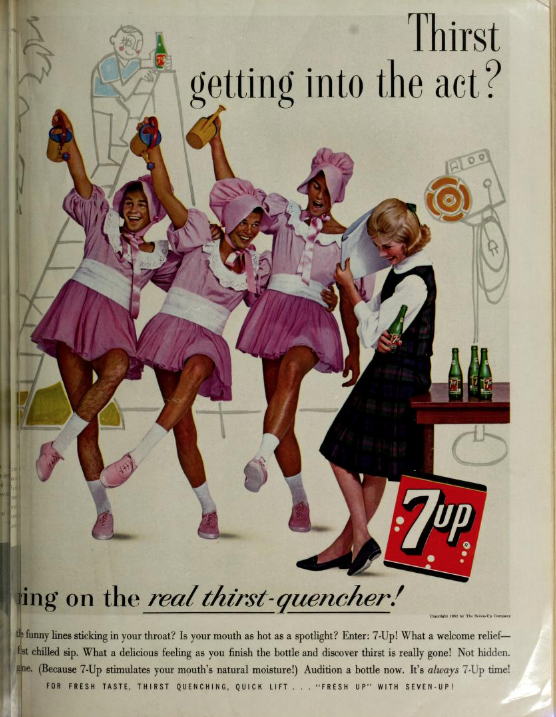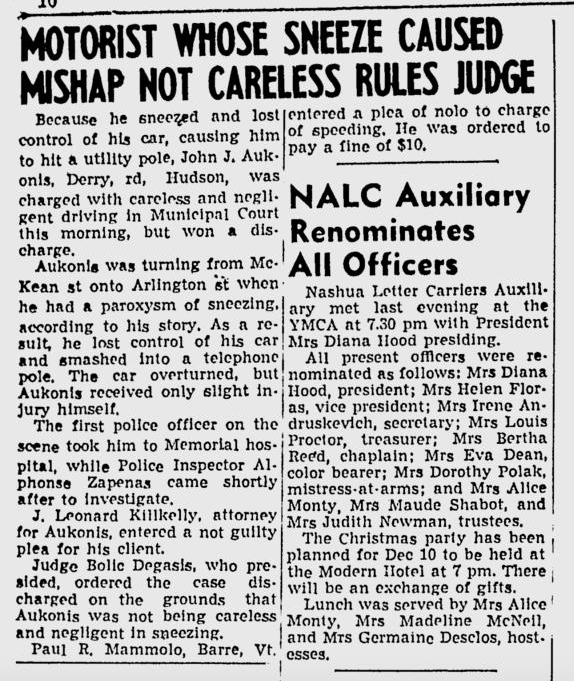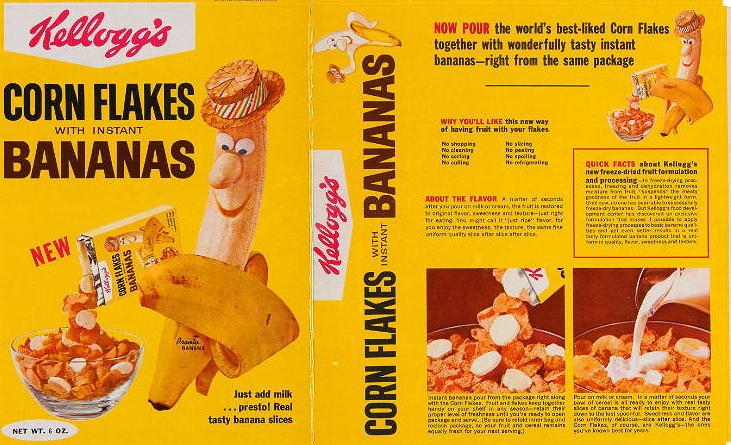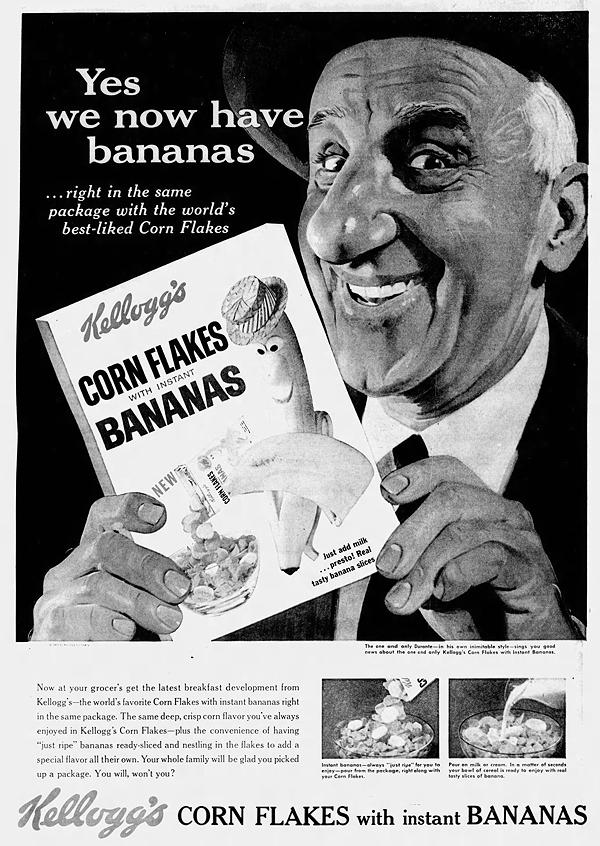May 2020
May 11, 2020
Debbie Drake, fitness pioneer
Debbie Drake was the first woman to have a daily exercise show on TV. The show's intended audience was housewives, but as the Physical Culture Study blog notes, it was more popular with men:
Posted By: Alex - Mon May 11, 2020 -
Comments (5)
Category: Exercise and Fitness, 1960s
Richard Sala, RIP
I loved the comics made by Richard Sala, a truly unique talent. As one of my Facebook pals, he was always funny, kind and clever. Alas, he's gone now.Here a rare bit of animation from him--INVISIBLE HANDS, the first bit--one of his first big breaks leading to a wonderful career, cut short.
Posted By: Paul - Mon May 11, 2020 -
Comments (0)
Category: Death, Comics, Books, Cartoons, 1990s, Fictional Monsters
May 10, 2020
Exercise Wings
Richard Burgess's 1941 patent (No. 2,244,444) describes a pair of feathered wings that could be attached to the arms of an individual, who would then flap the wings up and down. This, claimed Burgess, would create a sense of buoyancy, while simultaneously providing physical exercise. In particular, it would "develop the chest, back, arm and leg muscles, while also tending to create accelerated breathing and thus general physical tone." It would do all this, he said, while also being "very diverting and accordingly attractive."How did this product never take off?

Posted By: Alex - Sun May 10, 2020 -
Comments (0)
Category: Exercise and Fitness, Inventions, Patents, 1940s
Follies of the Madmen #476

Source.
Posted By: Paul - Sun May 10, 2020 -
Comments (0)
Category: Ambiguity, Uncertainty and Deliberate Obscurity, Business, Advertising, Soda, Pop, Soft Drinks and other Non-Alcoholic Beverages, 1960s, Gender-bending
May 9, 2020
Theater in a Whale
An idea proposed, but never realized, for the Pan-American Exposition held in Buffalo in 1901.
Some info from the Butte Miner - June 26, 1899:
[An] idea, which was born in the brain of a man of biblical mould, is that of the "Jonah" theatre, and the submitted plan calls for the construction of a mammoth whale: a whale of iron and steel, which is to lie anchored in shallow water near the banks of the exposition. Dainty ferry boats are to play between the shore and the mouth of the simile of the floating Standard Oil company of former days, and those cheerful ones who live to enjoy themselves in strange ways are to be ferried from the shore to the tongue of the floater. There a smooth young man will have his hands crossed with silver and after this transaction the passengers will be at liberty to walk down the whale's tongue to the room where for three days and three nights Jonah sat and mourned the day that he became a Populist.
In that section all will be light and cool and cheerful, and on a stage vaudevillians will kick and sing and cavort and musicians will add to the gaiety of the scene and will make many believe that the ancient stories of Jonah's troubles were much overrated.
Posted By: Alex - Sat May 09, 2020 -
Comments (2)
Category: Fairs, Amusement Parks, and Resorts, Theater and Stage, 1900s
Photocopy Cha Cha
All of the film's images were created solely by using the photographic capabilities of a photocopying machine to generate sequential pictures of hands, faces, and other body parts. Directed, produced and edited by Chel White.
Posted By: Paul - Sat May 09, 2020 -
Comments (3)
Category: Technology, Surrealism, Stop-motion Animation
May 8, 2020
Tarantula security guards
In the mid-1970s, there was a fad among jewelry stores to use tarantulas as security guards. Stores claimed it helped prevent thefts, although tarantulas aren't going to do much to stop a thief, besides looking scary. Rattlesnakes, I imagine, might work better.
La Crosse Tribune - July 19, 1975

Posted By: Alex - Fri May 08, 2020 -
Comments (5)
Category: Crime, Insects and Spiders, 1970s
Sneezing Protected
This is good to know in the pandemic era. I hope coughing is covered as well.
Source.
Posted By: Paul - Fri May 08, 2020 -
Comments (2)
Category: Accidents, Law, 1950s, Cars
May 7, 2020
Instant Bananas

Scott Bruce and Bill Crawford offer some context in their book Cerealizing America: The Unsweetened Story of American Breakfast Cereal:
In 1966, Kellogg pulled the plug on Corn Flakes and Instant Bananas. "We tested the market carefully, we tried, we failed, and we're getting out of the market," Kellogg's Ken Englert told Consumer Advertising magazine. Without informing the star of their decision, Kellogg decided to move Durante over from Instant Bananas to Kellogg's main line, Corn Flakes. "Everything was kept quiet until Carl Hixon [a Burnett writer] and myself went to New York to shoot him in a couple of commercials for Kellogg's Corn Flakes," recalled commercial director Rudy Behlmer. "Suddenly he looks at the [story] boards and he says, 'Where are da bananas?' and we said, 'Well, Jimmy… this is without bananas,' and he said, 'No bananas, no Durante.'"

Wisconsin State Journal - Mar 24, 1965
Posted By: Alex - Thu May 07, 2020 -
Comments (3)
Category: Cereal, 1960s, Bananas
T-Rex Race
Posted By: Paul - Thu May 07, 2020 -
Comments (0)
Category: Contests, Races and Other Competitions, Dinosaurs and Other Extinct Creatures
| Get WU Posts by Email | |
|---|---|

| Who We Are |
|---|
| Alex Boese Alex is the creator and curator of the Museum of Hoaxes. He's also the author of various weird, non-fiction books such as Elephants on Acid. Paul Di Filippo Paul has been paid to put weird ideas into fictional form for over thirty years, in his career as a noted science fiction writer. He has recently begun blogging on many curious topics with three fellow writers at The Inferior 4+1. Chuck Shepherd Chuck is the purveyor of News of the Weird, the syndicated column which for decades has set the gold-standard for reporting on oddities and the bizarre. Our banner was drawn by the legendary underground cartoonist Rick Altergott. Contact Us |

